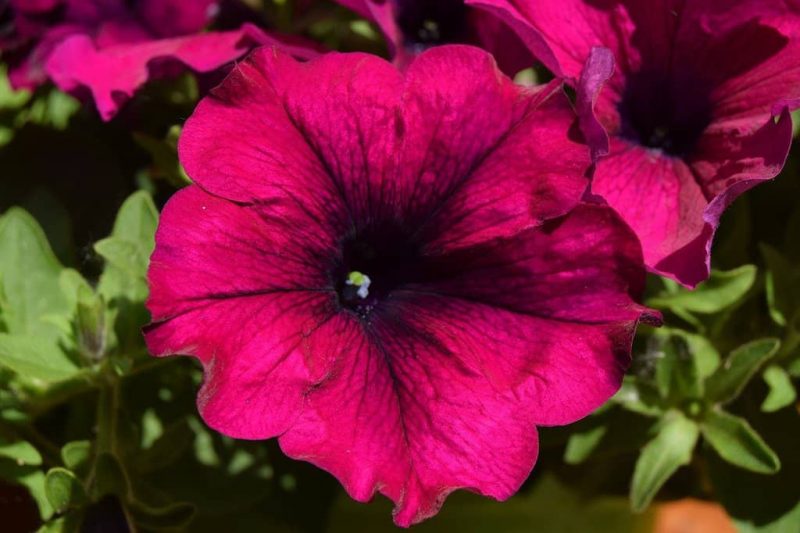If you’re interested in how to collect petunia seeds, you’ll be pleased that it only takes three steps. While there are two best propagation methods for petunias, it would always be helpful to know how to collect seeds if this is the rooting method you prefer. You can still get your seeds from centers, but the collection itself from existing plants is relatively easy anyway.
More so, you can always collect when your petunias allow you and keep them for later use. You’ll have free flowers from your garden that are both a delight to the sight and smell. They also have a long flowering period, so why not take advantage of your existing plants and create more gorgeous petunias for the garden.

How To Collect Petunia Seeds For Beginners
Step #1. Plant preparation
Regardless of the propagation technique, you can opt to grow your parent plants in the greenhouse. These will guarantee healthy sources of seeds, cuttings, and divisions because they are in an optimal environment. Remember that you’ll only be productive in collecting seeds if the petunias themselves are healthy and producing blooms that are capable to do so.
More so, choose a petunia variety that is suitable for your region. This way, you won’t face many potential drawbacks, and you can regularly collect seeds from your plants. When you’re about to gather near the end of the growing season, stop deadheading the petunias so that plant focuses on producing seed pods.
Step #2. Collecting seeds
For the collection itself, you can start it when the growing season is about to end because they’ll be ready for seed production at this point. As mentioned previously, stopping deadheading petunias will help with the production of seed pods. Once the petunia flowers fade and die, you can monitor the development of seed pods.
Remember that you don’t have to remove the dead flowers. The seed pods are at their base, and you have to let them dry first before collecting. Check on the calyx or the bulb-like portion at the base and it swelling and turning brown from previously being green is an indication of seed development.
You must remember a tricky part while waiting for the seed pods because you don’t want them to get too soon, but also not too late. When the pod begins to crack, cut it off the stem because the seeds are mature enough at this point. You also don’t want them to spill, get damaged, or develop mold.
Step #3. Storing seeds
When collecting pods, you don’t need damp or soft ones because there’s a high chance of them getting damaged from mold anyway. Once you have all the dry pods, spread them out in a paper towel. Ensure that they have adequate spacing for air circulation and store in a cool, dry area such as a greenhouse location out of direct sunlight.
They must dry well for a week, so choose an environment that will not experience fluctuating conditions. After a week, squeeze or smash a seedpod over a bowl. If the seeds are dried inside, and the pod makes a rattling noise when you shake it, they might be dry, so smashing would be easier to break the pod open.
After removing the seeds:
- Remove all the debris and husk in the bowl
- Pour the seeds into a paper envelope for storage and use later on
- Seal and label the envelope before putting it in another plastic bag and relocating in a cool, dark, and dry place for next season planting
Ensure that the seed packets won’t get exposed to freezing or damp conditions. Some gardeners also use dry milk as a desiccant to keep the seeds well. A teaspoon of dry milk in a wrapped paper towel inside the seed bag will help with preservation.
How To Germinate Petunia Seeds
As recommended by the University of Nebraska – Lincoln, it’s ideal to start petunia seeds indoors. The greenhouse will create a perfect environment for seed germination without the risk of a harsh climate. You can sow petunia seeds in a moist starting mix without covering them.
Maintain the medium moist and cover the container with a plastic bag. You can also monitor and keep the soil between 70 to 80°F to further encourage germination. The petunia seeds should germinate in four days without fail as long as you prevent them from getting damp.
Conclusion
Perhaps one of the most rewarding experiences in the garden is using it as your source for new plants. So if you have existing petunia plants, learning how to collect petunia seeds is a free way to have more petunias ready for planting. The process itself is even simple, where you’ll prepare healthy seed sources to ensure that they can produce seeds.
Stop deadheading in preparation for seed production, and check your fading and dying flowers. At the base is a bulb-like structure that will turn brown, and you can collect the pods when they’re about to crack. Spread them in a paper towel and store in a dry location out of sunlight for a week.
You should be ready to squeeze and crack the pods after the initial drying, and you can store them once again in a cool, dry, and dark place.

How can you tell if the petunia is a hybrid or not? I’ve got a hanging basket with a petunia I love and tried to get seeds from it but there’s nothing in the pods. Is this a hybrid? If so, it won’t regrow will it? Thank you.